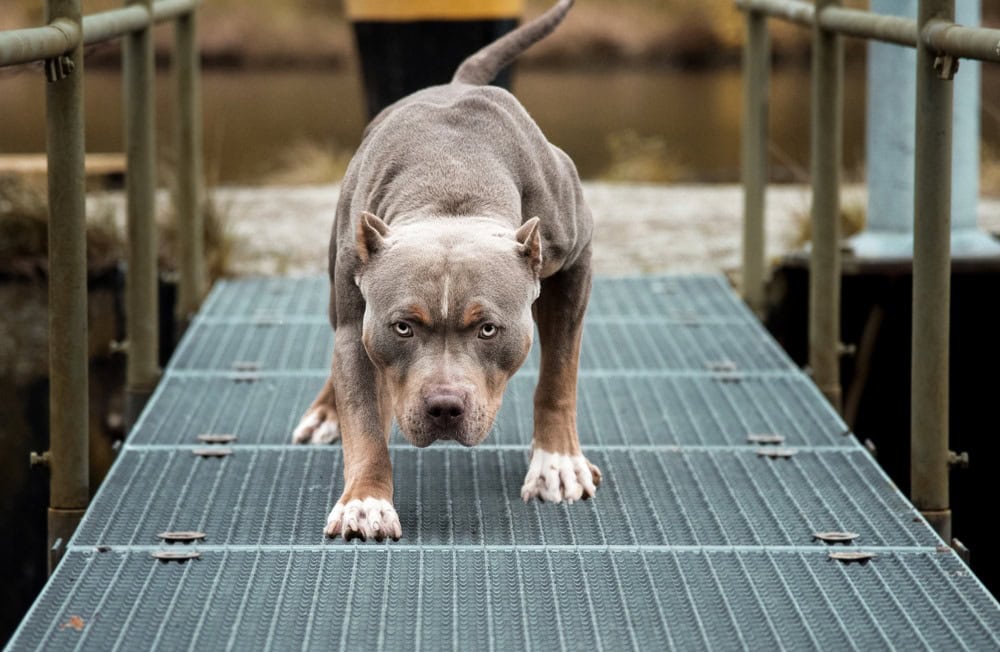Welsh Terrier vs Airedale Terrier: Main Differences (With Pictures)

Updated on
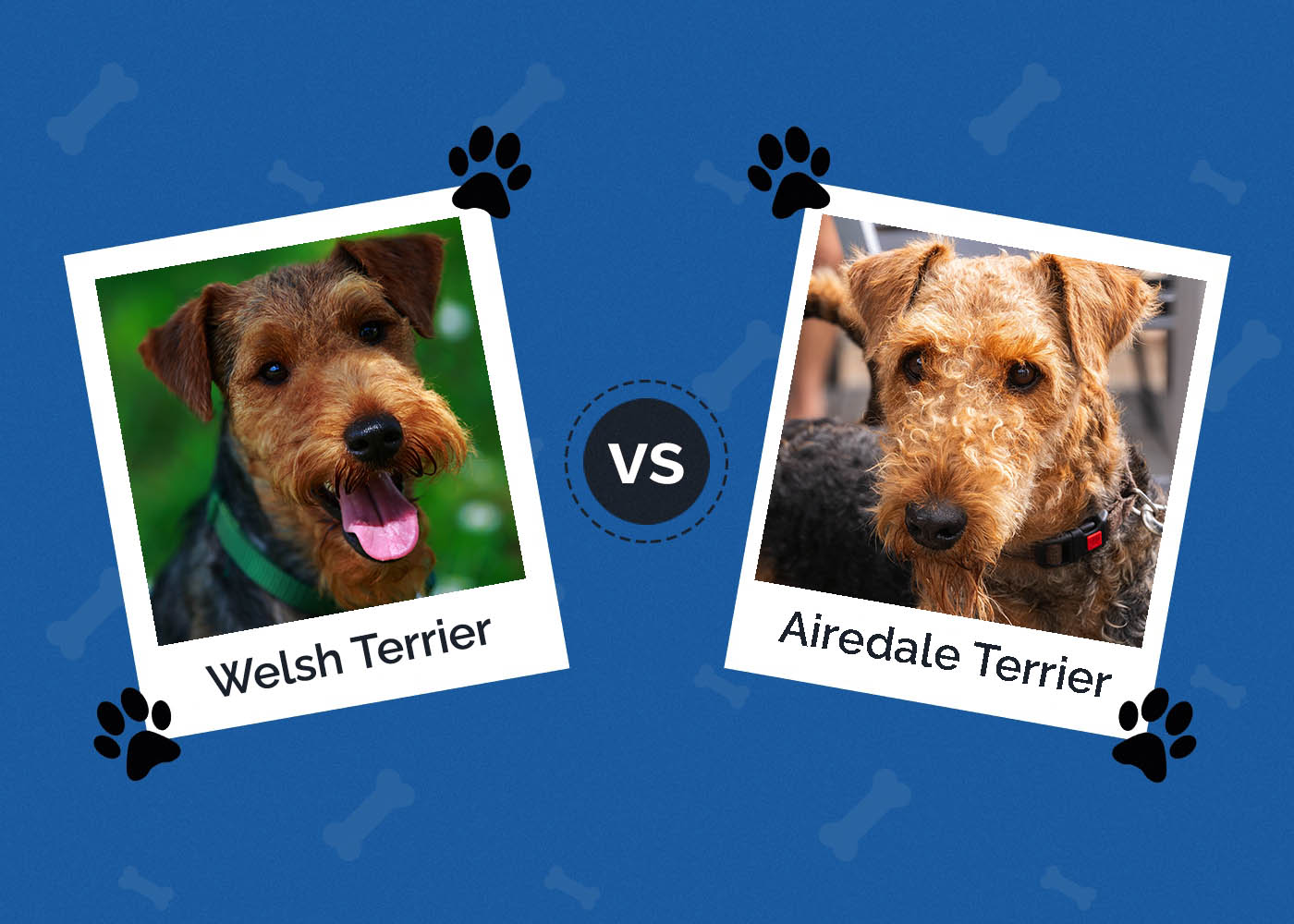
Click to Skip Ahead
Terriers have a special place in the hearts of dog fans. They are fun, playful, and always happy to spend time with their favorite humans. As for the Welsh and Airedale Terriers, these dogs are adventurous, smart, quick to follow commands, and easy to maintain. So, which dog should you choose? Well, no matter which four-legged bud you pick, you’ll get a faithful, protective, and affectionate new family member.
That said, these dogs are not the same: they differ in size, weight, exercise and grooming needs, and, of course, character. While the Welsh Terriers are very patient with children, Airedales are a bit more restless. At the same time, Airedale dogs are much bigger and better at carrying out watchdog duties. So, join us, and let’s learn more about each Terrier to make the right pick!
Visual Differences
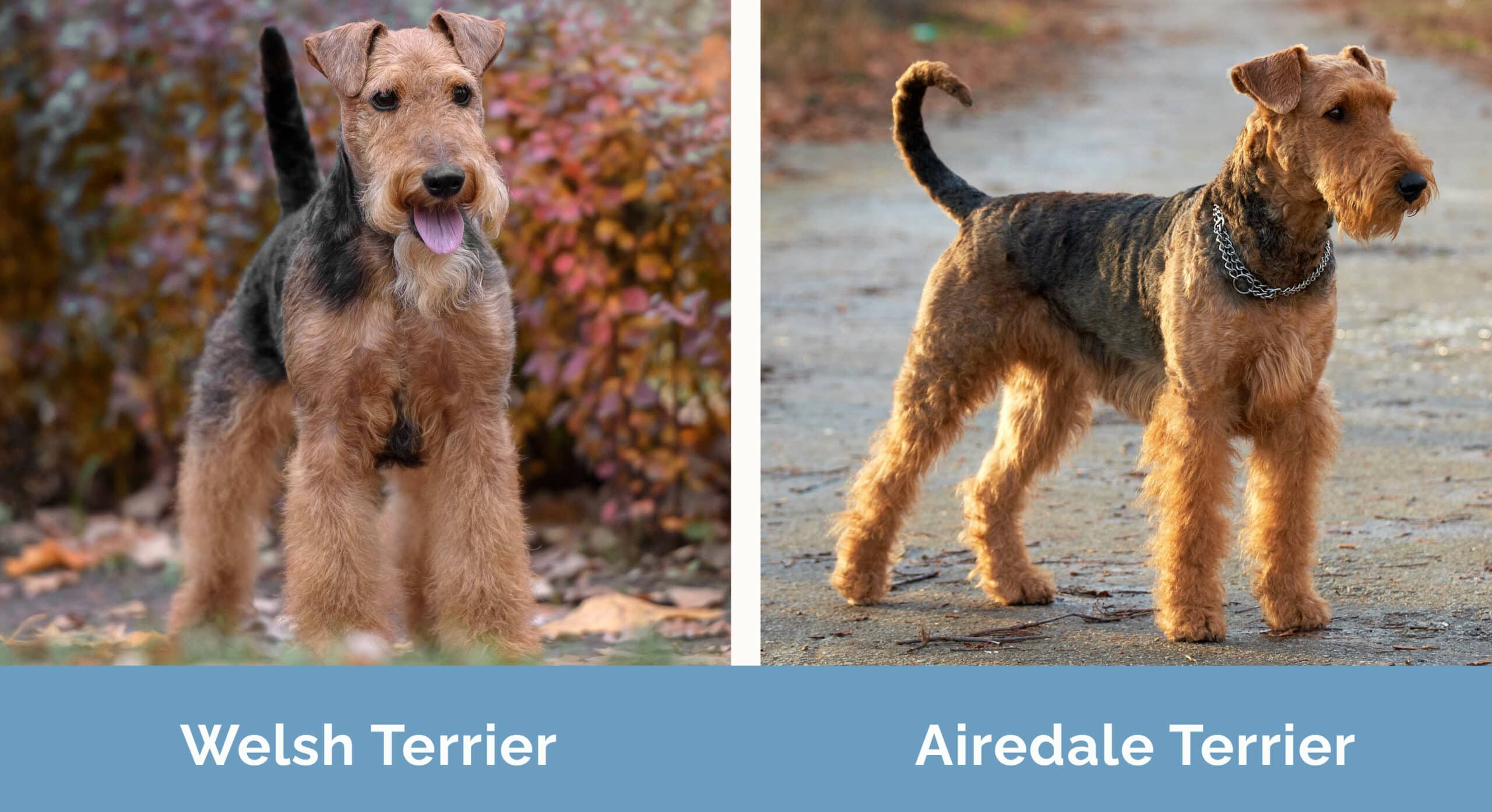
At a Glance
- Average height (adult): 12–15 inches
- Average weight (adult): 15–23 pounds
- Lifespan: 12–15 years
- Exercise: 2+ hours a day
- Grooming needs: Moderate/high
- Family-friendly: Very
- Patience with children: High
- Other pet-friendly: Yes (with training)
- Protective nature: High
- Trainability: Friendly, smart, spirited, eager to please, stubborn
- Average height (adult): 20–23 inches
- Average weight (adult): 45–70 pounds
- Lifespan: 11–14 years
- Exercise: 1–2 hours a day
- Grooming needs: Moderate
- Family-friendly: Yes
- Patience with children: Moderate
- Other pet-friendly: Not particularly
- Protective nature: Very high
- Trainability: Fearless, affectionate, witty, bold, strong-willed
Welsh Terrier Overview
Kind-hearted, free-spirited, and with a witty brain, the Welsh Terrier is the whole package. Specifically bred to hunt down foxes, vermin, and badgers, these dogs are fast, precise, and always ready to rumble. And while the Welsh dogs have been around for over 500 years, the modern-day breed was developed in the early 18th century. As for official recognition, the AKC welcomed them into the club as a standalone breed in 1888.
As the name suggests, these gifted dogs were brought up in Wales (the harsh mountainous region). Now, this might come as a surprise, but badgers and foxes aren’t easy prey: they can fight back with those sharp claws and teeth! So, the Welshman had to bring its a-game to tackle these foes. But that’s exactly why today, after being domesticated for hundreds of years, it’s still a top-notch hunter with the heart of a lion.
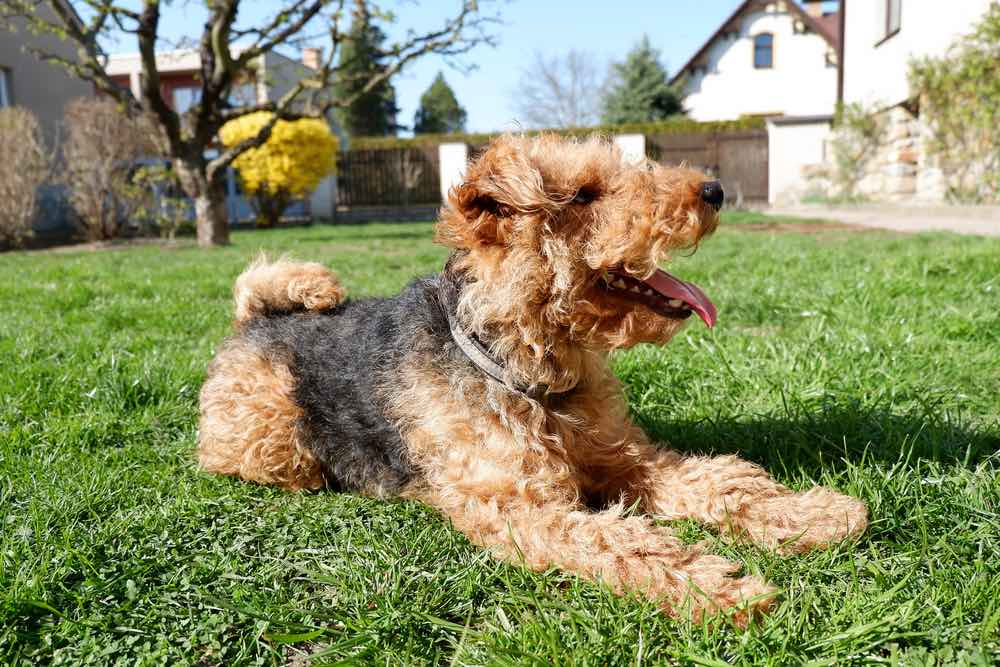
Personality / Character
Welsh Terriers are affectionate pets. They create strong, meaningful bonds with their human parents and do exceptionally well around children. You’ll still have to be there to supervise the situation, of course, until the kids grow a bit older and learn how to behave around pups. And what about other pups, cats, and rabbits? Are the Welsh good around fellow pets? For the most part, yes, but only if they go through early socialization.
These champs are open toward strangers and have a playful, inquisitive temperament, yet may be suspicious of certain people and animals. Besides, if they don’t like something, you’ll be the first to hear about that: the Welshmen are quite the barkers! Going back to the pros, Welsh Terriers need little time to get comfy with new environments, thanks to an above-average adaptability level.
Training / Exercise
As a hunting dog, the Welsh have a strong prey drive and will chase after cats, hamsters, and badgers. That’s why obedience training and socialization should be a part of this dog’s upbringing. It’s the only way to ensure it doesn’t grow into a bully. This active, energetic breed likes to play fetch, tug-of-war, and other high-intensity games. Regular walks, jogs, and hikes should be a part of the routine as well, summing up to 2–3 hours of exercise per day.
Mental stimulation is important here as well: make sure the dog has a toy or two back home to keep it entertained while you’re away.
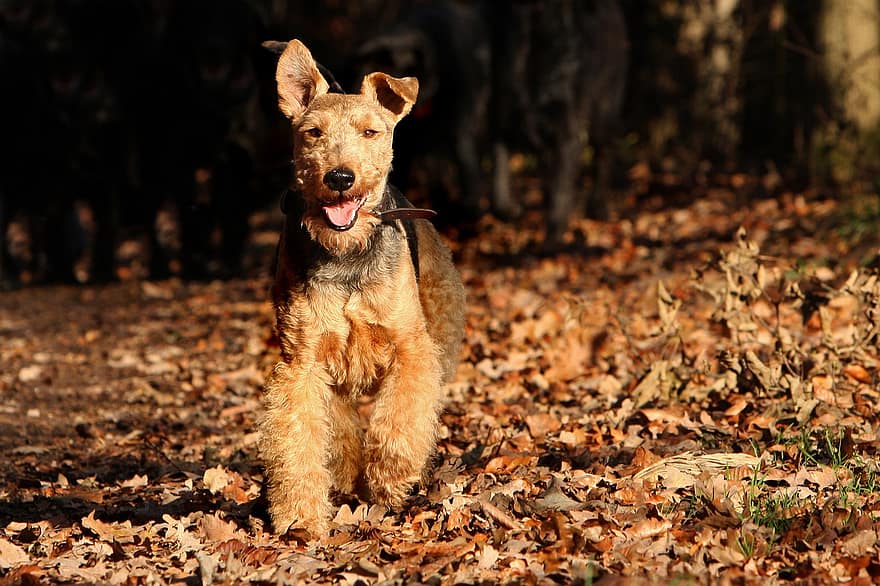
Appearance
This is a rough-tough, compact, and well-built doggo with enough energy and stamina for a lifetime. It’s not particularly big, though, and rarely goes over 20 pounds in weight and 15 inches in height. The coat is short (black and tan or grizzle and tan) and fits tightly to the skin. Plus, like most Terriers, the Welshman has a big, rectangular-shaped head and cute folded ears. As for the cheeky beard, erect tail, and long legs, they make this four-legged bud especially dashing.
Health / Care
The Welsh Terrier can live for up to 15 years and is considered a hardy, healthy dog. As long as you feed it premium-quality, protein-rich food and take it out for regular walks, this champ will easily beat most infections, bacteria, and illnesses.
- Hip dysplasia
- Atopic dermatitis
- Lens luxation
- Addison’s disease
Grooming
For starters, brush the dog’s coat 1–2 times a week and trim its nails once in 7–10 days. If you’re up for it, pluck/strip the hair with your bare hands. This is a complicated technique, though: you might want to let a pro handle it. As for clipping, only do it once in 2–3 months and let the fur grow a bit longer during cold days. Bathe the Welsh Terrier every 2–3 months and call it a day!
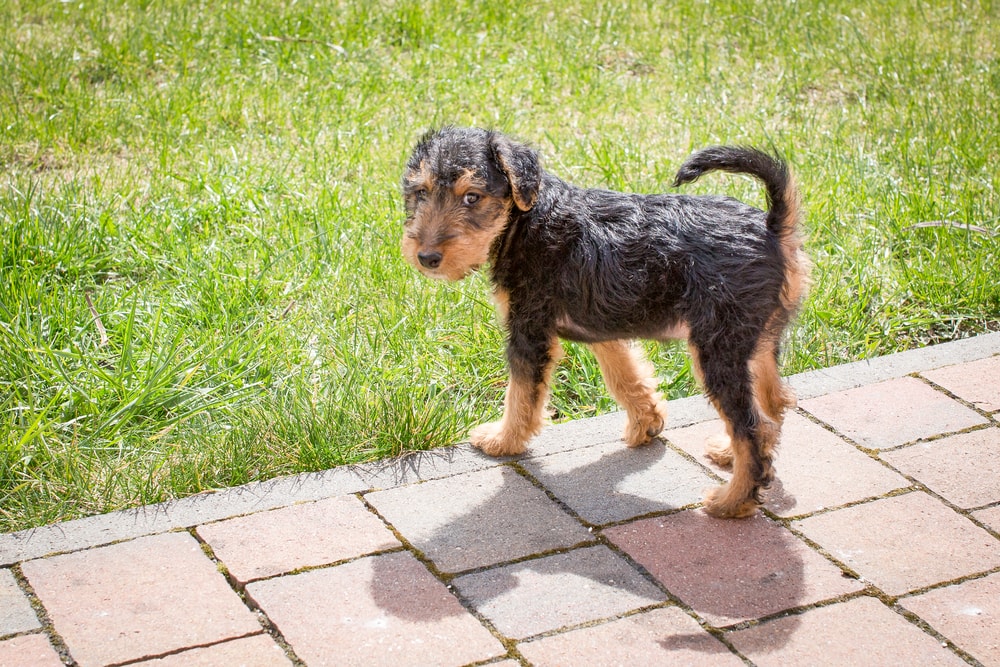
Suitable For:
Active singles, seniors, or families looking to adopt an energetic, cheerful, and adaptable doggo will find the Welshman to be a perfect match. This pup likes to play and exercise in the great outdoors yet can be happy within apartment walls. It’s also quite the people pleaser and likes to hang out with kids. So, if you’re ready to spend about two hours a day with a pet and keep it both physically and mentally stimulated, look no further than the Welsh Terrier!
- Compact, doesn’t mind tiny apartments
- Quick to adapt to new environments
- Happy to play with kids, very patient
- Requires 2–3 hours of daily exercise
- High mental stimulation needs, barks often
Airedale Terrier Overview
This right here is the biggest and strongest of all Terriers, the Airedale—a loyal, courageous, and clever doggo. Known among dog fans as the “King of All Terriers”, this is a jack-of-all-trades pup: it can hunt, perform as an athlete, and keep you company as a pet. Airedales were bred in the English Aire Valley in the mid-19th century (brought up by regular workers). Created with one goal in mind (to hunt), Airedale Terriers served as guardians and messenger dogs during the First World War.
They also proved to be exceptional warriors, herders, and police officers. This is interesting: this dog was “manufactured” from a whole bunch of different breeds, including the Tan, English Black, and Irish Terriers.
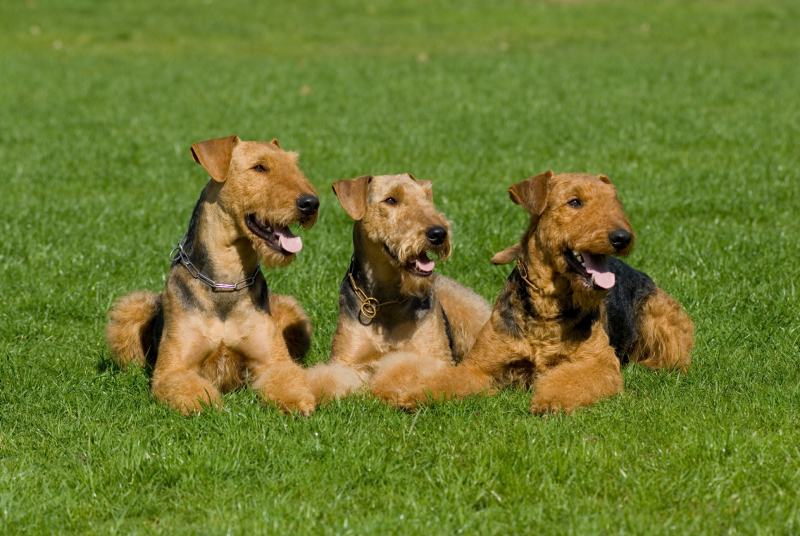
Personality / Character
Airedales aren’t nearly as “forgiving” toward the outside world as the Welsh Terriers. They do, of course, love and trust their owners, but strangers get the other side of the coin. We’re talking about other dogs, cats, bunnies, and humans. That makes the Welshmen a less-than-ideal choice if you already have a domestic animal at home. Airedale Terriers like roughly the same kinds of games and outside activities as the Welshmen.
They also love being around children, but you won’t get the same level of tolerance. So, we don’t recommend ever letting kids play with this doggo; only allow interactions once they grow bigger.
Training / Exercise
Headstrong, stubborn, and bold, the Airedale Terrier is not an easy dog to train. While it does follow commands from people it respects, it won’t be easy to turn this pet into an exemplary canine. Compared to the Welsh Terrier, the Airedale is harder to tame. For this reason, socialization and obedience training should start at a very young age (5–6 months). Use a firm hand, yet don’t be harsh. Be very patient, take it slow, and praise the fur bud with positive reinforcement.
And remember: Airedale Terriers have a short attention span and get bored easily. So, keep the sessions short, yet exciting for the pup. On average, this dog needs 1.5–2 hours of exercise per day, or even a bit less.
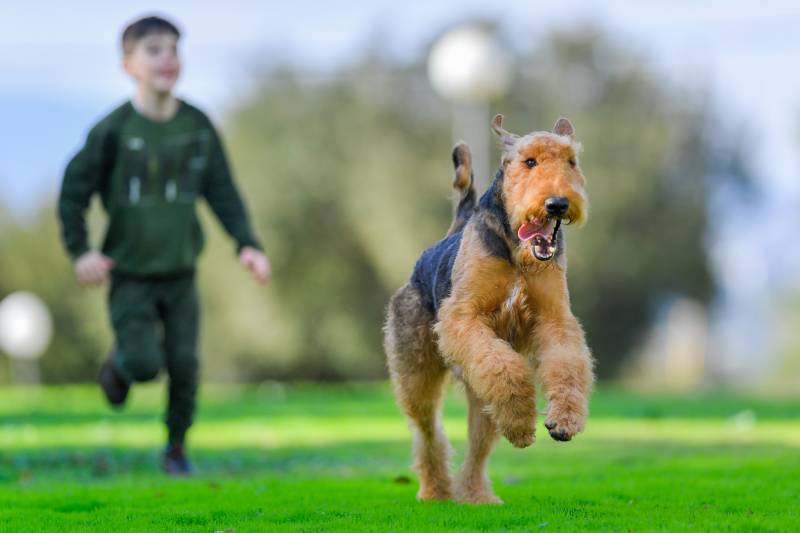
Appearance
The sheer size of this doggo is enough to scare intruders away. It easily reaches 23 inches in height (at the shoulders) and weighs up to 70 pounds. And, just like its Welsh sibling, this champ can either have a black/tan or a grizzle/tan coat (always dense and wiry). The shared physical properties also include long, sturdy legs, a longer-than-average head, and a beard to die for. Still, the Airedale is significantly larger and stands taller, and the difference is easy to notice.
Health / Care
The biggest and heaviest Terrier is a rough-tough doggo. It can easily handle temperature extremes and unforgiving terrain and chase after the most elusive prey. It’s been this way for centuries, which has turned the Airedale into a healthy breed. It’s still prone to certain diseases and medical conditions.
- Hip dysplasia
- Dilated cardiomyopathy
- Pancreatitis
- Gastric dilatation and volvulus
- Various infections
- Dental problems
Grooming
Compared to Welsh Terriers, Airedales shed less, although their grooming requirements are roughly the same. The coat is nice and short (and wiry) and doesn’t take hours to groom. If you brush it once a week, the fur will look like a million dollars, and you’ll get to collect all the dead hair before it ends up on the carpet. Stripping and bathing should be done once in 2–3 months. Deal with the mats with your hands and a comb.
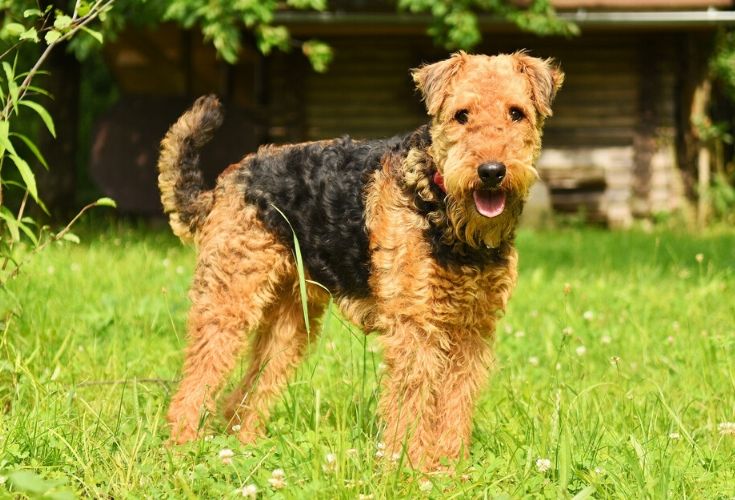
Suitable For:
This courageous, imposing dog is a natural-born protector. As the biggest among all Terriers, the Airedale is a force to reckon with. With that, it lives its best life when surrounded by favorite people. The Airedale Terrier is an incredibly affectionate pet, but it’s also hostile toward fellow canines and felines. That’s why it’s best suited for single-pet households. You can tame this feisty canine, but it will take time and dedication.
- Equally good at hunting, sports, and pet duties
- Strong and imposing, a perfect guardian
- Moderate grooming needs
- Aggressive toward dogs and cats
- Takes patience to train/tame
Which Breed Is Right for You?
Outgoing, caring, and affectionate, Welsh and Airedale Terriers are a blessing to be around. They’re both energetic, upbeat pups that like nothing more than to spend quality time with their human parents. This could be watching a show on the TV, playing some mind games, or conquering a new mountainous trail. However, if you’re looking for a bold, formidable protector for your property/loved ones, Airedales will be a better choice.
They are equally good as pets, athletes, and hunters. On the downside, these buds are aggressive against fellow canines and can only be tamed through obedience training. Welsh Terriers, in contrast, are more welcoming toward strangers and love to play with kiddos. More good news: although the Welsh need at least two hours of daily exercise, they don’t feel cramped in small apartments. So, if you want a friendly, quick-to-adapt doggo, go with a Welsh Terrier!
See Also: 8 Dog Breeds Similar to Airedale Terriers (With Pictures)
Featured Image Credit: (L) Olga Aniven, Shutterstock | (R) KajaHiis, Shutterstock



